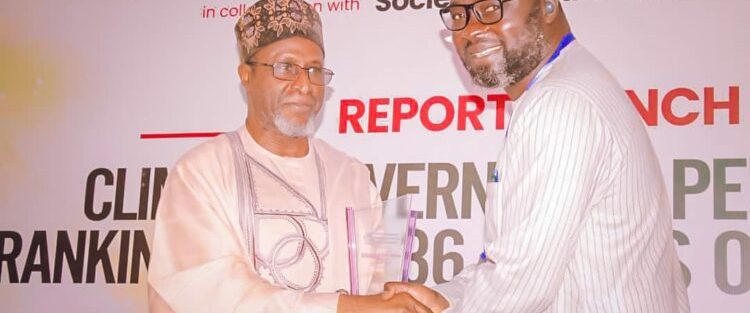Gombe State has received an award for emerging with an AA rating in the climate governance performance ranking among the 36 states of Nigeria.
This recognition was bestowed on Gombe State by the Federal Ministry of Environment in collaboration with the Society for Planet and Prosperity (SPP) during a high-level event held in Abuja.
The state was ranked second in the country, accumulating 128 points, just behind Lagos, which clinched the first position with 182 points. Ebonyi, Borno, and Ekiti states followed in third and fourth positions, respectively.
The Minister of Environment, Balarabe Abbas Lawan, who chaired the event, stated that this first-ever rating and ranking of climate governance performance among states is aimed at promoting climate awareness and encouraging greater action at the subnational level.
He commended the Gombe State Government and other high-performing states for their significant strides in climate change action.
Governor Inuwa Yahaya, represented by the Commissioner for Environment, Water, and Forest Resources, Mohammed Sa’idu Fawu, expressed gratitude to the Federal Government for recognizing the state’s achievements in climate change action.
He emphasised that the award would motivate his administration to intensify its efforts in environmental sustainability.
The Governor used the occasion to provide an overview of his administration’s efforts to address climate action, combat land degradation, and support livelihoods in Gombe State.
He said to address climate action, combat land degradation, and support livelihoods, his government launched the Gombe Goes Green Project (3G) in 2019 through aggressive reforestation and natural regeneration efforts.
The 3G project, he explained, set an ambitious target of planting and nurturing at least one million trees annually, providing direct employment to thousands of individuals, mainly youth, who are engaged in tree planting and nurturing.
“The pilot phase, which began in June 2019, has successfully planted over four million assorted seedlings in various parts of the state.”
In addition to the 3G Project, the Governor added, his administration is implementing a strategic policy to facilitate a gradual but sustained transition to renewable energy.
This includes the all-in-one solar-powered streetlights project, with nearly 200 kilometres of solar streetlights installed to date. Furthermore, all new government buildings, health facilities, and education institutions are now being equipped with solar power.
The administration has also prioritized flood and erosion control by rehabilitating gullies and restoring lands and communities threatened by these issues.
The impact of these interventions, according to Governor Inuwa Yahaya, has been significant.
He said that “Degraded lands across the state have been restored, effectively combating desertification, erosion, and soil nutrient decline. Biodiversity has been revived by reintroducing various indigenous tree species, with a particular focus on those facing extinction.”
Additionally, livelihoods have improved, and sustainable development has been promoted through the planting of exotic fruit-bearing trees that benefit local communities.
Adaptation to climate change has also been enhanced by planting fast-growing tree varieties.
Furthermore, societal awareness and understanding of human-induced ecological problems and their solutions have increased, along with the adoption of renewable energy technologies”.
Earlier, the President /Chairman, Board of Trustees of the Society for Planet and Prosperity, Professor Chukwumerije Okereke, explained that the project follows the successful mapping of climate impacts, policies, and action plans at the subnational level.
This evaluation, completed in collaboration with the department of climate change and the Nigeria Governors’ Forum (NGF), aims to enhance climate leadership at the state level by using standard metrics and rating criteria.






